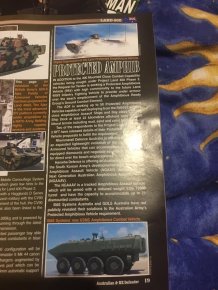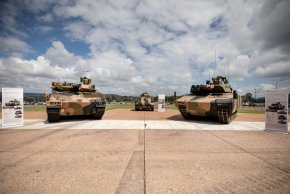I don’t see this as a proof: you have discounted target RCS, background clutter, and
you cannot discount beam losses as soon as the AESA beam shapes off boresight. While to an extent this could compensate for not assigning gain to the antennae I don’t think it is that simple.
While the conditions and
power transmitted in this paper is different than your example, they haven’t anywhere near the detection range you are mentioning.
The research is well written, however it does not discount anything of what I said. I gave a broad look and intentionally did not go into specifics that only the manufacturer deals with, and you focused on certain specifics while ignoring the idea I was conveying.
So I can only conclude that we are talking about entirely different things, which makes this argument a little moot.
But the topic does interest me, and if my answer so far did not satisfy you, I can go into that detail as well.
My point is you can use the APS's radars as a sensor for an air defense, and any generic IFV's weapons as the kinetic effector, therefore enabling a platform to act as a quasi air defense asset. And via networking, any maneuvering air defense umbrella could be massively thickened by simply investing in the natural technological advancements of ground combat vehicles, instead of allocating extra budget and resources to dedicated air defense units.
In my comment, I did not mention micro UAVs. For any tier of air defense, they will remain an issue that industry has yet to fully cope with. There are plenty of other threats like artillery, PGMs, and small MALE drones, that are more traditional threats that will not go away, and which maneuvering forces have yet to address in full, or in many armed forces, at all.
I also did not go into terrain details.
It should be fairly obvious that a tank's crew will not be actually expected to detect targets 100km away and track them as if they were an AD crew. They don't even have a visual interface of what the APS sees - but it could be data that is relayed to other more relevant assets.
Looking at more realistic scenarios, such as 5km range, they will be able to detect small targets.
Already, APS are supposed to detect low RCS ATGMs, HEAT shells, and even APFSDS shells. I'll leave the APFSDS issue aside because the sabot petals can be used by the APS to discriminate it when it's fired and just avoid tracking it altogether.
But a 105mm HEAT shell for example, has an RCS of 0.011m^2. The APS is expected to detect that, track it all the way to the vehicle, and intercept. All that while in uneven, cluttered environment.
Let's look at aviation now - they use radars to detect targets on the ground. If you can use a radar to do photography instead of an EO pod, and can discriminate minor objects, do you think a computer would have any issue discriminating an object?
There are also radars today that can track targets through defilade, or systems that can counter man portable UAVs.
There are missiles that are guided by a mmW, such as the Brimstone, and have to hit ground targets. They're much harder to discriminate because they're actually attached to the ground, especially when static, compared to a UAV that is constantly moving and therefore can be detected by cross analyzing the doppler effect, phase shifts, and return time (directly related to doppler).
So what makes this micro UAV any different from an ATGM?





